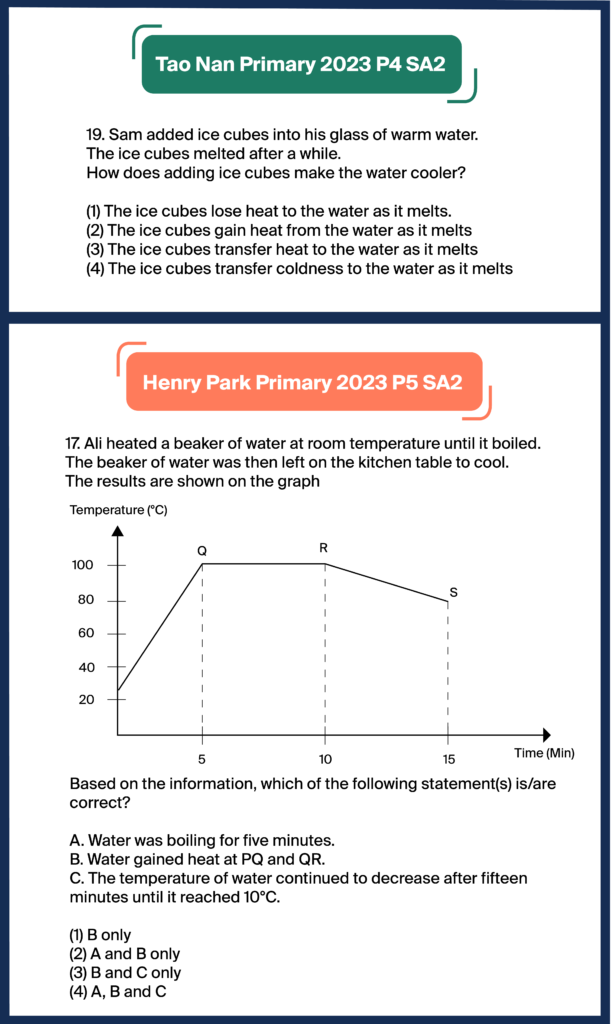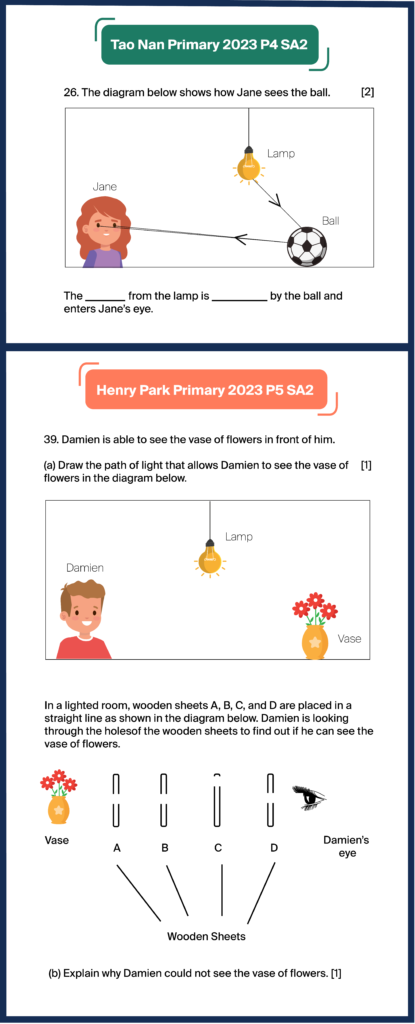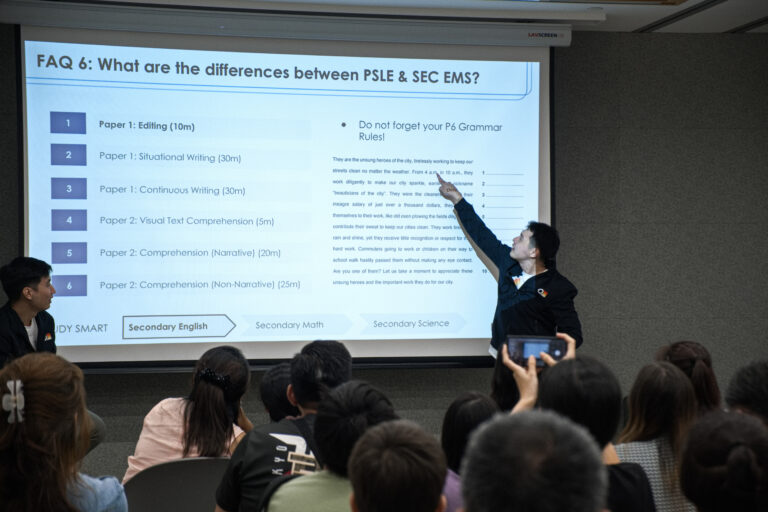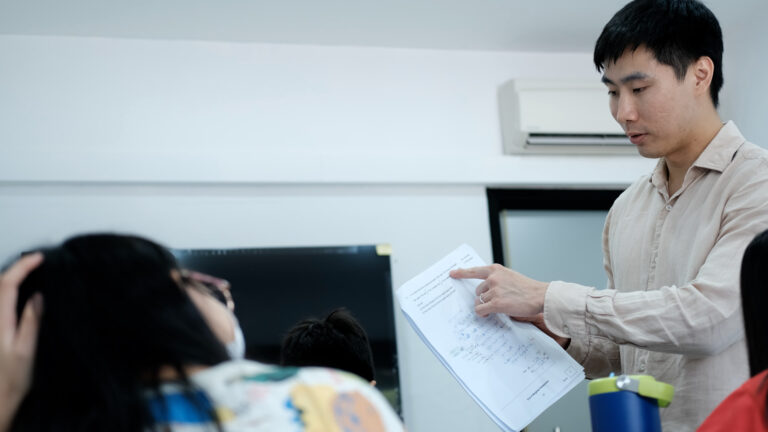Having a child transition from P4 to P5 is like preparing for a storm. You see it coming. But you can’t stop it.
I’m talking about the dip in grades across all subjects. By the end of P5, you’re staring at double-digit ALs. The storm has finally hit.
The worst part? You knew this was coming.
Friends warned you about it. You heard it through the grapevine. You even tried tutoring your child after school. But nothing worked.
So why do so many students experience this sudden drop in grades in P5? And more importantly, what can you do about it?
Today, we’ll unpack the reasons and tackle the question every parent has once asked themselves:
“Are you smarter than a 5th grader?”
If you think back to your secondary school days, you might remember learning about exponential graphs:

See how the curve steepens rapidly? That’s exactly how quickly the syllabus becomes more complex. And it’s easy to see why grades can take a sudden plunge.
As the saying goes: the steeper the climb, the harder the fall.
To give you a clearer picture of what “more complex” means, let’s look at some examples from Science.
Example 1. Topical Coverage
P4: Plant Parts and Functions
- List similarities and differences of plant parts in different plants
- Identify, label and state the function of plant parts
- State how the plant parts come together to help the plant grow well
- State and explain what happens if certain plant parts are missing
- Making conclusions about the plant parts based on characteristics of plant parts
- Compare and contrast the characteristics of plant parts from different plants and how they are useful to humans and animals
P5: Reproduction in plants and seed dispersal
- Identify and Label Flower Parts: Identify and label the parts of a flower
- Explain the Reproductive Process: Describe the process of plant reproduction, including the roles of pollination, fertilization, and seed formation.
- Compare Pollination Methods: Compare the characteristics of wind-pollinated flowers and animal-pollinated flowers.
- Role of Pollinators: Explain how wind and animals help in the process of pollination.
- Consequences of Missing Parts: State and explain what happens if certain plant parts (e.g., stamen, pistil, or petals) are missing or damaged.
- Seed Dispersal Importance: State the importance of seed dispersal for plant survival and growth.
- Explain Seed Dispersal Methods: List and explain the four primary methods of seed dispersal (wind, water, animals, explosive).
- Identify Characteristics for Seed Dispersal: Recognise the key characteristics of fruits and seeds that facilitate dispersal.
- Advantages and Disadvantages: Discuss the advantages and disadvantages of different methods of seed dispersal for the plant’s life cycle.
Example 2: Multiple Choice Questions

Example 3: Open Ended Questions

The days of simply memorizing and repeating concepts to score well in P4 are over.
Instead, questions in P5 now demand much deeper thinking. Students are only rewarded if they truly understand the concepts and can apply them. Sometimes even across different topics.
And for the first time ever, students will encounter exam papers that mirror the structure of the PSLE, adding even more pressure to the mix.
The same shift happens in Math.
In P4, fractions questions are mostly arithmetic. As long as you know how to calculate fractions equations, you’re good to go. Occasionally, you might require to use model drawing but that’s about it.
When you reach P5, everything changes.
Heuristics are introduced. And you now need techniques like Repeated Entity, Equating Numerators, Sets, Numbers X Value, and Before-Change-After to solve fractions questions.
And that’s not all.
P5 also used to introduce ratio which added another layer of complexity. Suddenly, ratio and fractions aren’t separate topics anymore. They merge into a much larger topic, creating a universe of new and challenging questions.
Recognising this challenge, MOE in 2021 updated the Math curriculum so that P5 students from 2025 onwards will no longer learn Ratio. Instead, Ratio will be introduced as a P6 topic.
Will this change make things easier for students?
Perhaps.
Some argue that delaying the topic to P6 gives students more time to build a strong foundation before tackling it.
Others believe the challenge is simply postponed.
Either way, the complications will come. It’s just a question of when.
The shift in English from P4 to P5 is also just as significant.
In Paper 1, students face new challenges that demand higher levels of creativity and independence.
Situational Writing is introduced as a completely new component, requiring students to write in a formal style based on a given scenario.
Meanwhile, Continuous Writing becomes more rigorous. The marks increase from 20 to 36, and students must now craft their own stories based on a single topic and one picture. Gone are the guiding pictures from P4 that helped structure their narratives.
Paper 2 also doesn’t get any easier.
Grammar MCQs now test more than double the number of rules, demanding a deeper understanding of grammar concepts.
Synthesis and Transformation questions jump from 2 to 5, covering a wider range of question types.
In Comprehension Cloze, P5 students no longer have helping words provided, making it much harder to fill in the blanks.
Comprehension OE passages are longer, more complex, and include inference-based questions, where the answers aren’t directly stated in the text.
The result?
Students not only need a stronger command of the language but also sharper critical thinking skills to succeed.

If you can’t tell already, the P5 syllabus doesn’t just add harder questions. It also introduces a wider range of question types.
And this happens in every subject across EMS.
So how can you help your child navigate this challenging transition?
First, accept that this is part of the process.
The dip in grades is not a reflection of failure but a natural part of the learning curve that every student goes through. Even those who consistently score AL1s in P4 experience this shift. By acknowledging this reality, you’ll be better equipped to manage your expectations and your child’s emotional well-being.
Second, use this opportunity to teach resilience.
Help your child understand that setbacks are a chance to grow. It’s not about how they fall but how they rise. Show them that failures are stepping stones to success and equip them with the tools to keep going.
Finally, start with the end in mind.
Understanding the PSLE format and how questions evolve from the lower levels will help you better prepare your child for what lies ahead. Focus on building the right skills early on to cushion their fall. You might even be able to create a trampoline effect to help them bounce back stronger.
So perhaps the question isn’t “Are you smarter than a 5th grader?” but rather, “How can we help our children rise to the challenge?”
Because let’s be honest, you’ve been through your fair share of storms too. And just like you made it out stronger, so will they!



